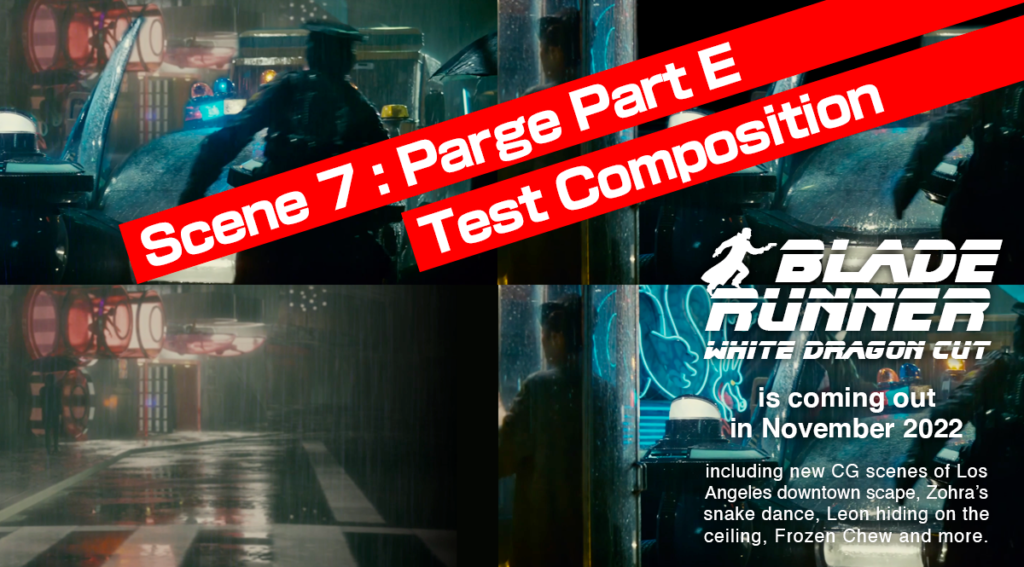
My latest update
As mentioned on Twitter and Facebook, I had been experiencing numbness and pain in my right arm for about two months, which made it hard to operate a mouse.
An MRI scan of my neck and shoulder showed no abnormality, so the cause remains unknown, but the pain in my arm is almost gone. but the numbness is still there, I will see how it goes for a while.
I’ve stopped editing White Dragon Cut for the past two months, but I’m planning to resume it gradually.
Changing of spinner takeoff point
As I’ve mentioned before, in the White Dragon cut, the takeoff point of the spinner with Deckard and Gaff was changed from the one in the movie.
The reason for the change is that the behavior of Deckard and Gaff on their way from the noodle bar to the take-off point would be very strange if the take-off point was the same as in the movie. (More details in this article)
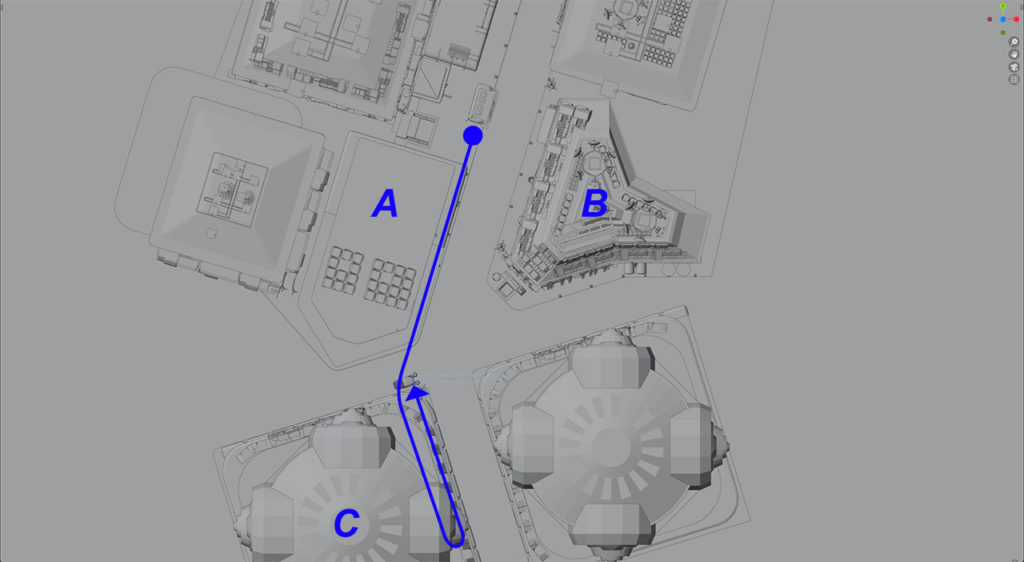
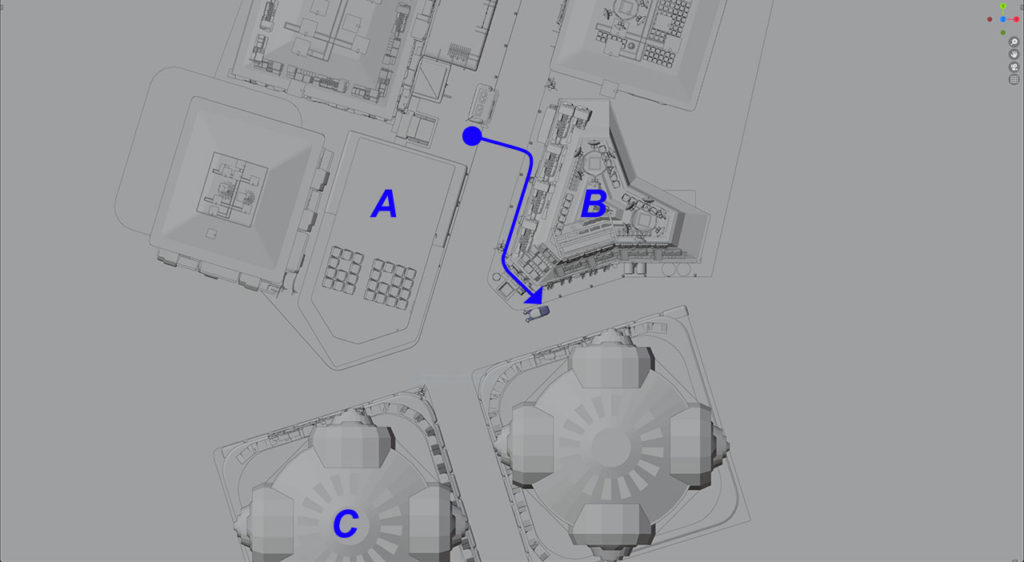
Compositing with After Effects
I have done a test edit for the “Spinner Takeoff” Scene E part.
You can see the police officer to run to the police spinner leading Deckard and Gaff .
I replaced the building in the background of this cut with a CG bookstore image.
In the original cut, the camera moves in pursuit of the running police officer, and I tested whether I can track this camera movement and match the CG image to the camera movement on Adobe After Effects. This is just a test edit for verification purposes.
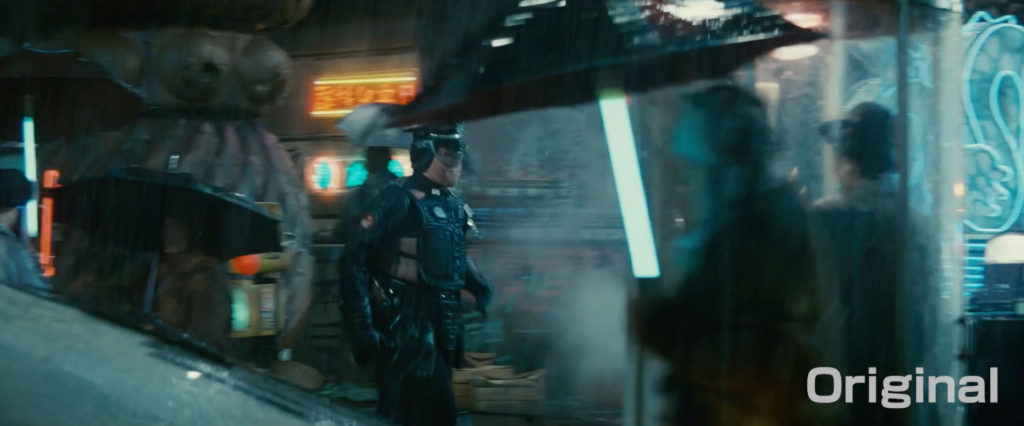
First, I created a CG image of the bookstore building that would serve as the background image. This time, I used still image instead of movie for the test composition.
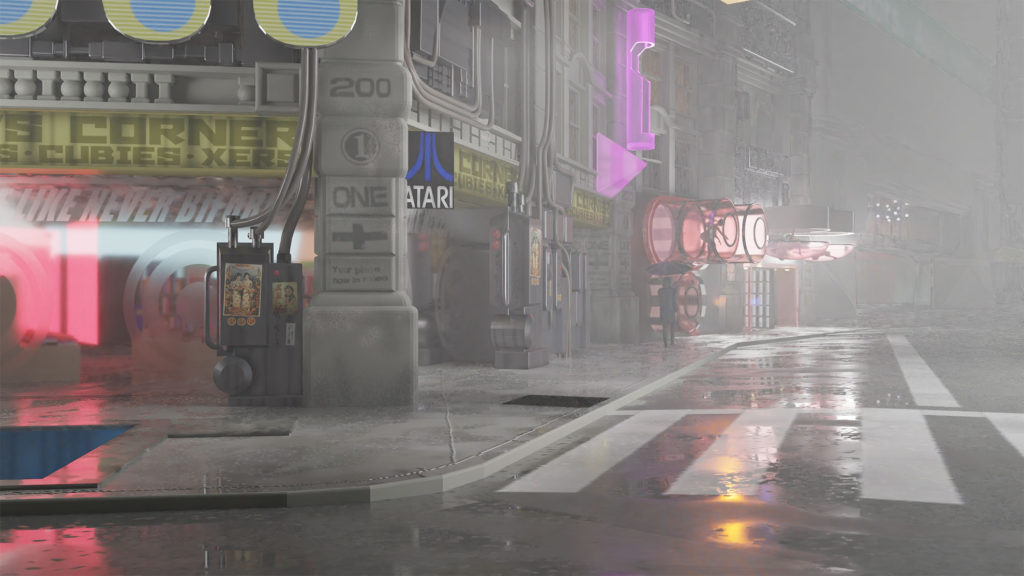
You can see the Snake Pit at the back of the building.
In order to replace the building in the background of the original cut with this CG image, I need to mask and remove the building in the original cut.
Since this is a test composite, I tried out to mask it roughly first.
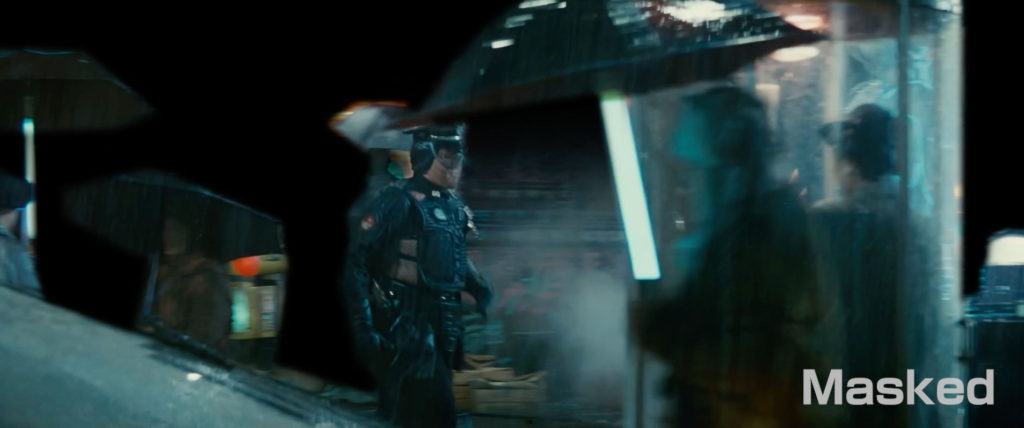
And I composited the CG image in the background of the original cut .
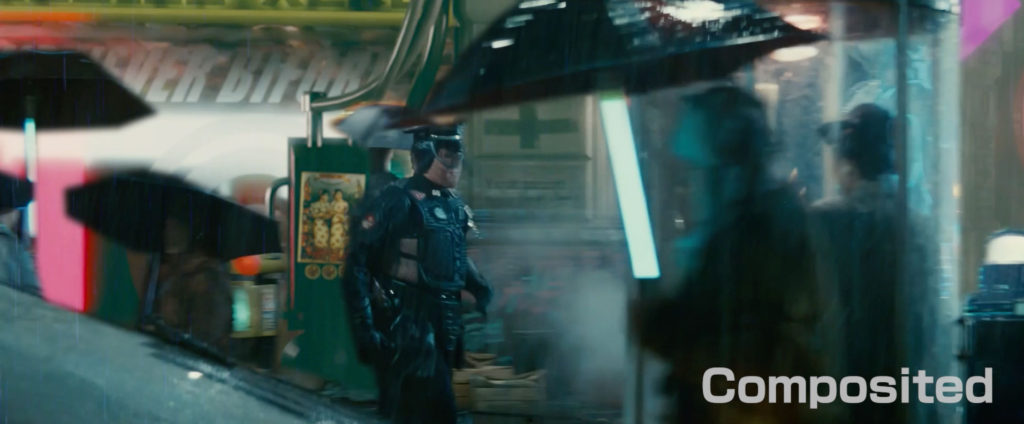
Motion tracking
Now, let’s talk about motion tracking, which is tracking the camera’s movement.
When Blade Runner was shot in the 80’s, there was no motion tracking technology, so it was very difficult to track the camera’s movement from the original footage. Smoke and rain interfered with the tracking.
Especially in this scene, there were no objects that could be used as tracking points throughout the entire scene because of the wide range of camera movement.
To be honest, I thought it would be impossible to track the camera movement in this footage, but I found a way to track the camera movement without any tracking points throughout the scene.
It’s a long story, so I’ll spare you the details for now, but I think it improved the accuracy of motion tracking.
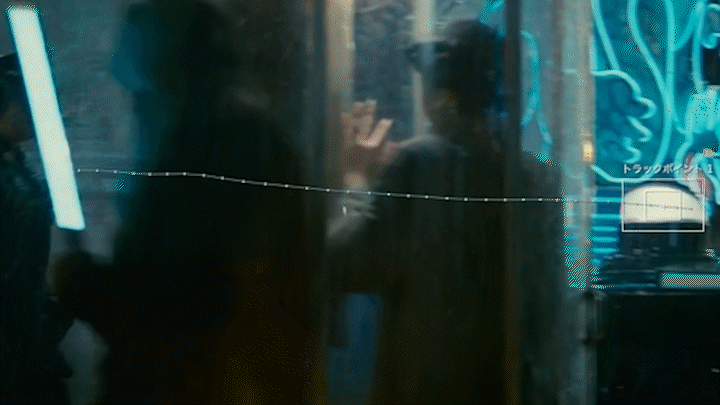
It’s time for the spinner to take off!
Since this test edit showed that the motion tracking works well, I will now start the final edit.
You could see dancers dancing in the snake pit tube in the final edit version.
Once this scene is complete, it’s time for the spinner to take off!
<Making video>
